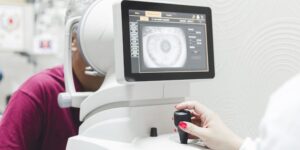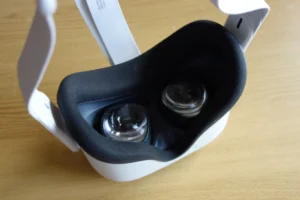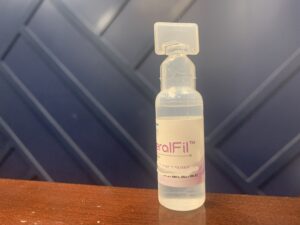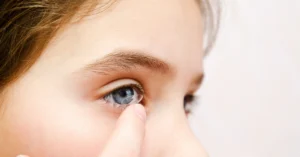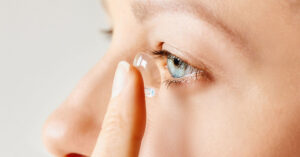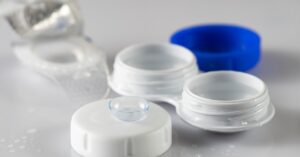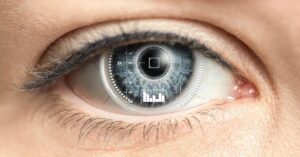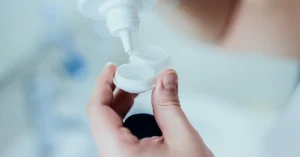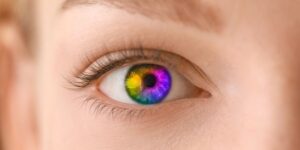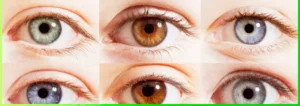What is Radial Keratotomy?
Radial Keratotomy, and known as RK, is a surgical procedure used to correct nearsightedness (myopia) by reshaping the cornea. While RK can be an effective treatment for some individuals, like any surgical procedure, it comes with potential complications that patients should be aware of.
What are the Complications of Radial Keratotomy?
Complications of RK can include overcorrection or under-correction, astigmatism, glare or halos, decreased contrast sensitivity, and dry eye syndrome. Overcorrection or under-correction can occur if the cornea is not reshaped precisely during the procedure, leading to blurry vision. Astigmatism, a condition where the cornea is irregularly shaped, can also result from RK surgery.
Glare or halos around lights can be a common side effect of RK, especially at night or in low-light conditions. This can impact a patient’s ability to drive at night or participate in certain activities. Decreased contrast sensitivity, or the ability to distinguish between shades of gray, can also be a complication of RK surgery.
One of the most common complications of RK is dry eye syndrome. The surgery can disrupt the normal tear film on the surface of the eye, leading to symptoms such as burning, itching, redness, and blurred vision. In severe cases, dry eye syndrome can affect a patient’s quality of life and may require additional treatments to manage.
It is important for patients considering RK surgery to discuss the potential complications with their eye care provider and weigh the risks against the benefits of the procedure. In some cases, the benefits of improved vision may outweigh the potential risks of complications. However, patients should be informed and prepared for the possibility of experiencing side effects after surgery.
Treatment Options for Radial Keratotomy Complications
Treatment options for complications of RK can vary depending on the specific issue that arises. For overcorrection or under-correction, glasses or contact lenses may be prescribed to help improve vision. In cases of astigmatism, additional surgical procedures may be necessary to correct the irregular shape of the cornea.
Glare or halos can sometimes improve over time as the eye heals, but in some cases, scleral lenses or visual aids may be recommended to help reduce these symptoms. Decreased contrast sensitivity may require visual therapy or prescription lenses to improve the ability to distinguish between shades of gray.
How Scleral Lenses Can Help With Post-RK Complications
For patients with overcorrection or under-correction after RK surgery, scleral lenses can provide custom-made correction to improve vision clarity and sharpness. The large size of the lenses allows for a more precise fit on the eye, reducing the risk of discomfort or vision distortion. Scleral lenses can also help correct astigmatism by providing a smooth, consistent surface for light to enter the eye, improving visual acuity.
Patients experiencing glare or halos after RK surgery may find relief with scleral lenses, as the design of the lenses can help reduce the scattering of light entering the eye. The larger size of the lenses also helps to create a more stable tear film on the surface of the eye, reducing dryness and improving overall comfort for patients with dry eye syndrome.
Scleral lenses can also be beneficial for patients with decreased contrast sensitivity after RK surgery. The lenses provide a larger optical zone, which can enhance visual acuity and improve the ability to distinguish between shades of gray. Patients may experience improved contrast sensitivity and overall visual quality with the use of scleral lenses.
In addition to providing improved vision and comfort, scleral lenses can also help protect the cornea and promote healing in patients who have undergone RK surgery. The consistent fit and surface of the lenses can reduce the risk of further complications and provide a protective barrier for the cornea, allowing it to heal properly.
Dry Eye Syndrome After Radial Keratotomy Surgery
Dry eye syndrome is a common complication experienced by patients after radial keratotomy (RK) surgery. The disruption of the tear film on the surface of the eye during RK can lead to symptoms such as burning, itching, redness, and blurred vision. Managing dry eye syndrome effectively is crucial to improving comfort and vision outcomes for patients who have undergone RK surgery.
There are several strategies that patients can utilize to help alleviate dry eye symptoms after RK surgery. One of the simplest and most effective methods is to use artificial tears regularly throughout the day. These lubricating eye drops can help to replenish the moisture in the eyes and provide relief from dryness and irritation.
In addition to artificial tears, patients can also benefit from using warm compresses on their eyes to help stimulate the production of natural tears. Placing a warm, damp washcloth over the eyes for a few minutes can help to unclog the oil glands in the eyelids and improve the quality of the tear film.
Another important aspect of managing dry eye syndrome after RK surgery is to avoid environmental factors that can exacerbate dryness. This includes avoiding exposure to smoke, dry air, and wind, as well as taking breaks from prolonged screen time to reduce eye strain.
For more severe cases of dry eye syndrome, prescription eye drops or medications may be necessary to help manage symptoms and promote healing of the eyes. Anti-inflammatory medications or immunomodulators can help to reduce inflammation and stimulate tear production in patients with chronic dry eye.
In addition to these management strategies, patients can also benefit from lifestyle changes that promote overall eye health. Staying hydrated, eating a balanced diet rich in omega-3 fatty acids, and getting regular exercise can all contribute to improved tear production and alleviate dry eye symptoms.
For patients experiencing persistent or severe dry eye symptoms after RK surgery, consultation with an eye care provider is recommended. An eye care provider can perform a comprehensive evaluation to determine the underlying cause of dry eye syndrome and develop a personalized treatment plan to address the specific needs of the patient.
By actively managing dry eye syndrome after RK surgery, patients can experience improved comfort, clarity of vision, and overall eye health. Incorporating a combination of lubricating eye drops, warm compresses, environmental adjustments, and potentially prescription medications can help to alleviate symptoms and promote healing of the eyes, leading to a better quality of life for patients post-RK surgery.
Finding a Scleral Lens Specialist When Struggling with RK Complications
Overall, while RK surgery can be an effective treatment for myopia, patients should be aware of the potential complications that can arise. By discussing the risks and benefits with their eye care provider and being prepared for the possibility of side effects, patients can make informed decisions about their eye care and treatment options. If complications do occur, there are a variety of treatment options available to help manage the symptoms and improve vision outcomes.
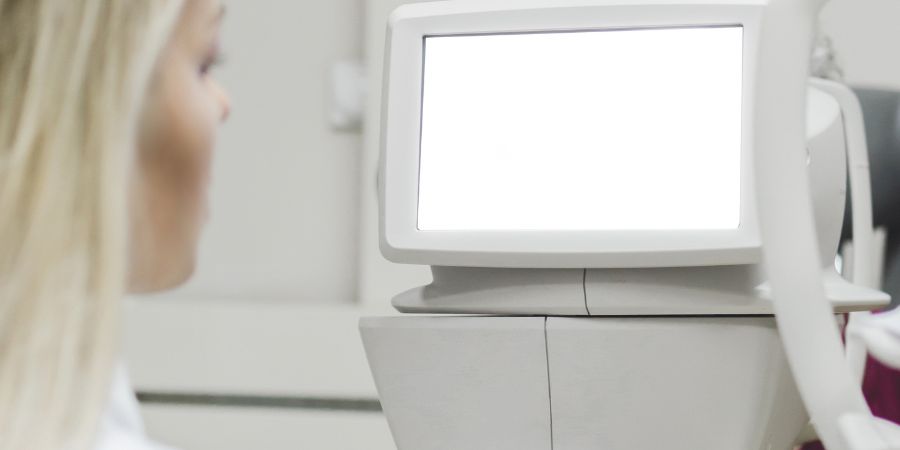
Common Radial Keratotomy FAQs
Common complications of RK surgery can include overcorrection or undercorrection, astigmatism, glare or halos, decreased contrast sensitivity, and dry eye syndrome.
Scleral lenses can provide custom-made correction to improve vision clarity and sharpness, reduce glare and halos, and promote healing of the cornea in patients post-RK surgery.
Symptoms of dry eye syndrome after RK surgery can include burning, itching, redness, blurred vision, and discomfort.
Patients can manage dry eye syndrome after RK surgery by using artificial tears, warm compresses, avoiding environmental triggers, and potentially using prescription eye drops or medications.
Yes, staying hydrated, eating a balanced diet rich in omega-3 fatty acids, and getting regular exercise can help improve tear production and alleviate dry eye symptoms.
Patients experiencing persistent or severe dry eye symptoms after RK surgery should consult with an eye care provider for a comprehensive evaluation and personalized treatment plan.
Yes, additional surgical procedures may be necessary to correct complications such as astigmatism after RK surgery.
In some cases, glare or halos after RK surgery can improve over time as the eye heals. However, special lenses or visual aids may be recommended to help reduce these symptoms.
Patients considering RK surgery should discuss the potential complications with their eye care provider, be prepared for the possibility of side effects, and make an informed decision based on their individual needs and circumstances.

